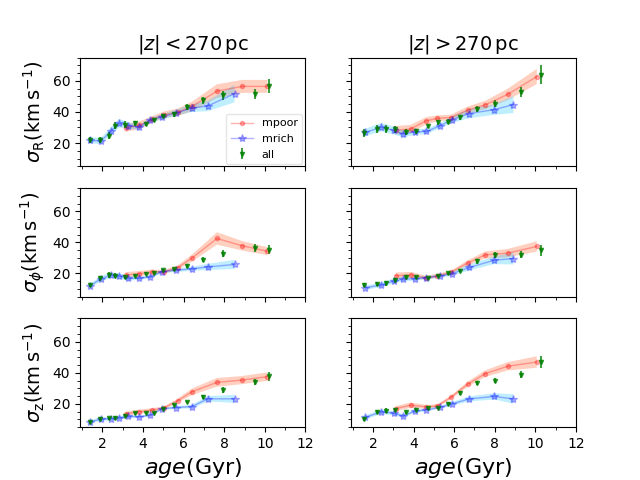You are here
Chinese Astronomers Reveal Age-Kinematical Relation of Milky Way Disc
Chinese astronomers from National Astronomical Observatories of China (NAOC) have confirmed the heating mechanism of the Milky Way disc using Gaia-TGAS data and LAMOST data. They also revealed an evidence that the chemical and kinematical properties of thin and thick disc are distinct.
The velocity dispersion of the disc stars is observed to increase with their age. It is commonly believed that the increasing trend of age-velocity dispersion relation is caused by dynamical effects, also known as heating mechanism of the disc. Numerical simulations suggest that the transient spiral arms can significantly heat the in-plane motion of disc stars without much influence the vertical motion. Other theoretical work show that the giant molecular clouds are quite efficient at redirecting the velocity of stars out of the plane.

The age–velocity dispersion relation for the two sub-samples with different metallicities at two different |z| bins. Different coloured symbols represent different samples. The green triangles represent the whole sample, labelled as ‘all’. The red dots represent the metal-poor sample, labelled as ‘mpoor’. The blue stars represent the metal-rich sample, labelled as ‘mrich’. The red and blue shaded bands give the corresponding errors for the metal-poor and metal-rich samples, respectively.
In 2016, Chinese astronomers constructed the age-kinematics relation for sub-giant branch and low red giant stars at solar neighbourhood with new statistical methods. The parallaxes and proper motion are measured by Gaia-TGAS data, while the radial velocities and ages are measured from LAMOST catalogue. They found that the velocity dispersion increases with the age, which is consistent with the prediction of heating mechanism driven by the spiral arms and giant molecular clouds.Their findings also suggest that old, metal-poor population has higher velocity dispersion, which is treated as an evidence that the thick disc component has a distinct chemical and kinematical property compared to the thin disc component.
The study is published at Monthly Notices of the Royal Astronomical Society, March 2018.
